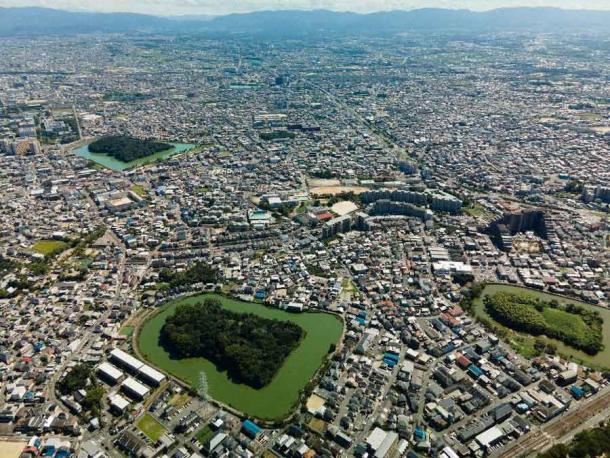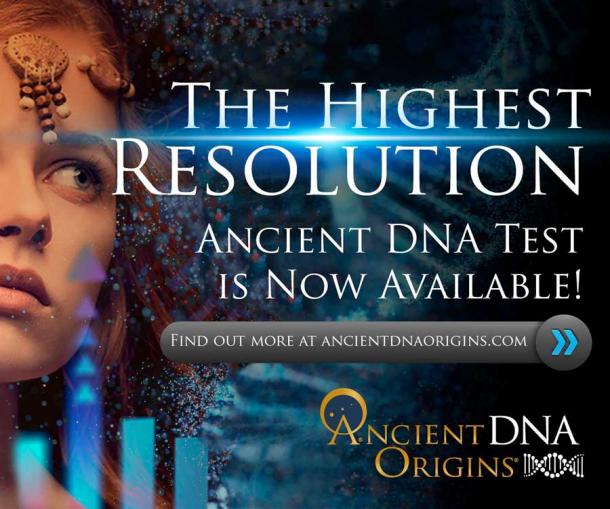
Ancient DNA Rewrites Story of Japanese Ancestry
The archipelago nation of Japan has been occupied since the Upper Paleolithic period (36,000 BC), and dual genomic Japanese ancestry has been the dominant theory, up until now. A new study carried out by Trinity College Dublin, published in the journal Sciences Advances, has completely changed this narrative, pointing to a tripartite Japanese ancestry, i.e., genetic origins from three different, ancient populations.
"We are very excited about our findings on the tripartite structure of Japanese populations. This finding is significant in terms of rewriting the origins of modern Japanese by taking advantage of the power of ancient genomics," said Professor Shigeki Nakagome, a geneticist at Trinity College Dublin, and co-lead author of the study.
Japanese Ancestry Based on aDNA and New Genome Samples
The aDNA (ancient DNA) extracted from human bones, derived from 12 newly sequenced ancient Japanese genomes from pre- and post-farming periods, confirm the genetic signatures of early indigenous Jomon hunter-gatherers and immigrant Yayoi farmers.
However, the aDNA analysis also revealed a third Japanese ancestry source. This third genetic component comes from the Kofun people, a Japanese cultural phase that rapidly advanced between the 3rd and 7th centuries AD, reports Phys.org.
- Oldest Shark Attack Victim Ever, Found in an Ancient Japanese Mound
- The First Genome Data from Ancient Egyptian Mummies: Ancient Egyptians Were Most Closely Related to Ancient Populations from the Near East
The oldest of the study skeletons was that of a Jomon female, found in Ehime Prefecture, from 9,000 years ago, from which aDNA was extracted.
But the ancient DNA analysis of the latest study revealed something modern genetic data had completely missed. Three Japanese skeletons from 1,500 years ago, from a Kofun period site in Ishikawa Prefecture, showed three primary genetic sources, according to geneticist and study co-leader Professor Takashi Gakuhari of Kanazawa University, Japan.

An aerial view of the Mozu-Furuichi Kofun Group, a group of one hundred and twenty-three kofun or tumuli in Fujiidera and Habikino, Osaka Prefecture, Japan. Thirty-one of the burial mounds are keyhole-shaped, thirty round, forty-eight rectangular, and a further fourteen are of indeterminate shape. (Claude Jin / Adobe Stock)
The Third Japanese Ancestry Source: The Kofun People
The Kofun period is associated with the first emergence of political centralization in Japan, which continued and eventually became dominant. The Jomon people occupied the Japanese archipelago between 16,000 and 3,000 years ago, while the Yayoi migrated from the Asian mainland (specifically the northeast) and lived in Japan between 900 BC and 300 AD, says the Daily Mail. It was the Yayoi, who introduced wet-rice farming to Japan.
Based on the study results, the Kofun DNA comprised 71% of the genetic Japanese ancestry, versus 13% and 16% respectively for the Jomon and Yayoi DNA.
Interestingly, the Kofun ancestry most closely resembled the genetics of the Han people, who make up most of the population of China. "Chinese characters started to be used in this period [Kofun], such as Chinese characters inscribed on metal implements, for example swords," said Nakagome. He was referring to the import of technology and culture from China, by way of the Korean Peninsula.
"The indigenous Jomon people had their own unique lifestyle and culture within Japan for thousands of years prior to the adoption of rice farming during the subsequent Yayoi period. Our analysis clearly finds them to be a genetically distinct population with an unusually high affinity between all sampled individuals—even those differing by thousands of years in age and excavated from sites on different islands," explained Niall Cooke, a researcher at Trinity. "These results strongly suggest a prolonged period of isolation from the rest of the continent."

A notable contribution to pottery during the Kofun period was Sueki (or Sue) ware, first produced in the mid-fifth century. Although the roots of Sueki reach back to ancient China, its direct precursor is the grayware of the Three Kingdoms period in Korea. Technically more advanced than Jomon and Yayoi pottery, Sueki marks a turning point in the history of Japanese ceramics. This image shows a piece of Kofun Japanese stoneware, a recumbent bottle, from the late 6th century. (Metropolitan Museum of Art / CC0)
Japanese Isolation from the Mainland Due To Rising Seas
It is only during the last 3,000 years that the most radical cultural transformations occurred in Japan, with the transition from a hunter-gatherers’ lifestyle to rice farming, Chinese writing, new forms of pottery, and advanced political organization.
Japan’s geographical separation from the rest of the Asian continent, along with an extended period of isolation between 15,000 and 20,000 years ago, meant Japan’s cultural history followed its own isolated trajectory until the mainland immigrants arrived during the Yayoi period.
- Ancient DNA is Revealing the Origins of Livestock Herding in Africa
- Archaeological Mystery Solved with Modern Genetics: Y Chromosomes Reveal Population Boom and Bust in Ancient Japan
This was because of rising sea levels that led to an overall “deep divergence from continental populations,” leading to an increased insularization. Rising sea levels must have flooded a land bridge that connected the southern Japanese archipelago to the Asian mainland. Researchers suspect this was through the Korean Peninsula, at the time of the Last Glacial Maximum, around 26,000 BC.
"We now know that the ancestors derived from each of the foraging, agrarian, and state-formation phases made a significant contribution to the formation of Japanese populations today. In short, we have an entirely new tripartite model of Japanese genomic origins—instead of the dual-ancestry model that has been held for a significant time,” concluded Professor Nakagome.
Top image: One of the ancient Japanese skulls from which DNA was extracted. Credit: Shigeki Nakagome / Trinity College Dublin
By Sahir Pandey
References
Cooke, N., Mattiangeli, V., Cassidy, L. 2021. Ancient genomics reveals tripartite origins of Japanese populations. Sciences Advances, 7(38). Available at: https://www.science.org/doi/10.1126/sciadv.abh2419.
Dublin, TC. 2021. Ancient DNA rewrites early Japanese history—modern day populations have tripartite genetic origin. Available at: https://phys.org/news/2021-09-ancient-dna-rewrites-early-japanese.html.
Dunham, W. 2021. Study rewrites understanding of modern Japan’s genetic ancestry. Available at: https://www.reuters.com/world/asia-pacific/study-rewrites-understanding-modern-japans-genetic-ancestry-2021-09-17/.
Randall, I. 2021. Rewriting Japan's history: Modern Japanese populations descended from THREE ancient cultures and not two as previously thought, genetic analysis suggests. Available at: https://www.dailymail.co.uk/sciencetech/article-10002161/Archaeology-Modern-Japanese-populations-descended-THREE-ancient-cultures-not-two-thought.html.

















Comments
This site and its contributors are covering all the bases. The subject matter is revolutionary. Which makes the commentary always worth a read. Northern Invader found your comment interesting...mainly because these people you mentioned Ainu stood out as Anu. Just out of curiosity wanted to do a Google search and sure enough someone out there appears to think the same. Would understand if it's nothing u care for but thank you for the nugget. Never heard of these people. But will study them now. http://biblicalanthropology.blogspot.com/2016/03/the-annu-of-on-iunu.htm....
Deonte N. Ferino
So where to the Ainu who have occupied Hokkaido for millenia fit into this. The Japanese have forever not considered the Ainu to be Japanese.
Northern Invader
CanadianCurmudgeon